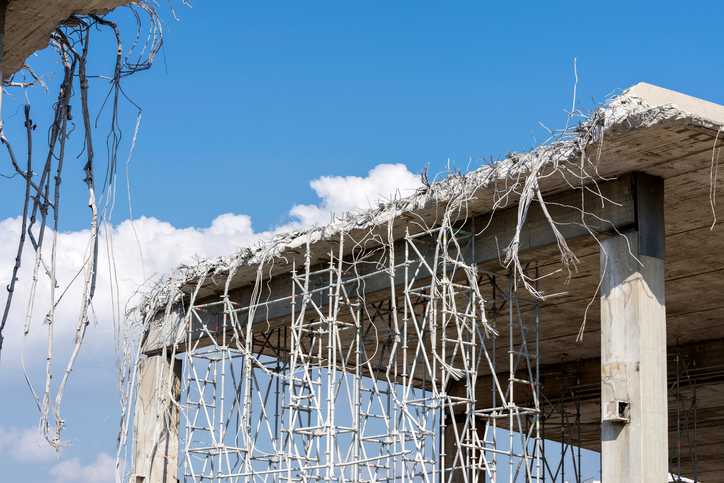How CTL Failure Analysis Experts Solve Mysteries Big and Small
Failure analysis begins with a riddle. Why did a product, machine, device, or structure break, collapse, stop working, or otherwise fail to perform its intended function? Answering that question requires careful detective work based on scientific principles, testing, analysis, and substantial forensic engineering experience.
Clients trying to solve these riddles have a lot on their minds. If anyone was hurt, they want to know what happened so that steps can be taken to ensure no one else is injured in the future. Even if no one was hurt, any potential safety issues need to be addressed and corrected as soon as possible. The failure or breakdown may require stopping work or production, creating costly delays.
Failures can take many forms. A company buys and installs a product that stops working. A manufacturer’s product fails without warning, or machinery or equipment in their factory breaks down. Recently installed concrete might spall or crack, or an asphalt parking lot or roadway can crack or settle. Windows, roofs, or walls leak water shortly after installation. Paint peels off a new building. Fire protection sprinkler lines start springing leaks. Welds can fail unexpectedly, buildings can collapse during construction, or a vehicular mechanical failure can occur, causing a crash.
Finding out what went wrong often falls to the forensic engineering experts at CTL Engineering, which has a decades-long track record in failure analysis work. Our clients include attorneys, insurance companies, manufacturers, construction companies, distributors, designers, building owners, architects, government agencies, and other engineering firms.
How a large-scale, multi-party failure analysis is conducted
Failures involving a significant amount of property damage or a personal injury have the potential to become involved in an insurance claim, worker’s compensation claim, or lawsuit. Our clients often hire us soon after the failure so that we can identify the responsible parties and rule out those who were not culpable.
CTL failure analysis experts evaluate and document the scene where the failure or incident occurred. All interested parties are invited to attend. An inspection and scene testing protocol may be prepared for approval beforehand.
We collect relevant physical evidence for laboratory analysis. We also obtain background information about the failure from employers, employees, manufacturers, first-responders, witnesses, and others related to the case.
Next, we prepare a laboratory testing protocol for review by all interested parties. Once we have agreement on the testing protocol and location, we conduct nondestructive and destructive testing of the evidence. Depending on the results of the initial analysis, we may conduct further laboratory tests.
Finally, our experts review the facts and reach opinions within a reasonable degree of scientific probability.
Failure analysis cases solved
These are a couple of recent failure analysis mysteries we solved:
- The sudden failure of scaffolding at a construction site failed caused several masons to fall to the ground. The scaffolding was relatively new when a component broke unexpectedly. CTL engineers:
- Tested similar scaffolding components for defects and cracks.
- Analyzed the failed scaffolding component to determine the cause of the failure.
- Helped alert the manufacturer of the scaffolding that they had a manufacturing problem.
- A large electric induction furnace used to melt scrap metal in a steel mill failed, causing the furnace to burn and collapse. We were retained to investigate whether cooling panels mounted to the outside of the furnace caused the failure, and if so, if the panels had been properly manufactured. Our failure analysis team:
- Performed extensive laboratory testing of components from the furnace.
- Collected information from the steel mill about the furnace history and operation.
- Gathered facts from the furnace manufacturer about the materials and design used in the cooling panels.
- Determined the cause of the failure and identified the responsible party.
How CTL’s forensic engineering skills stand out
Our experts may partner with other forensic engineering firms if necessary to provide the entire range of experts and testing services needed. CTL also provides laboratory services to other forensic engineers needing specific testing or consultation on their cases. For example, we recently assisted another forensic engineering firm working on a four-story building that collapsed during construction. They needed specialized metals expertise to analyze the broken bolts and steel beams from the building.
CTL has engineers with many years of experience in failure analysis. They get better with every case — the more they see and analyze, the more quickly and accurately they can identify and correctly analyze the cause of new failures.
If you need in-depth failure analysis expertise to solve these kinds of riddles, please contact us.

